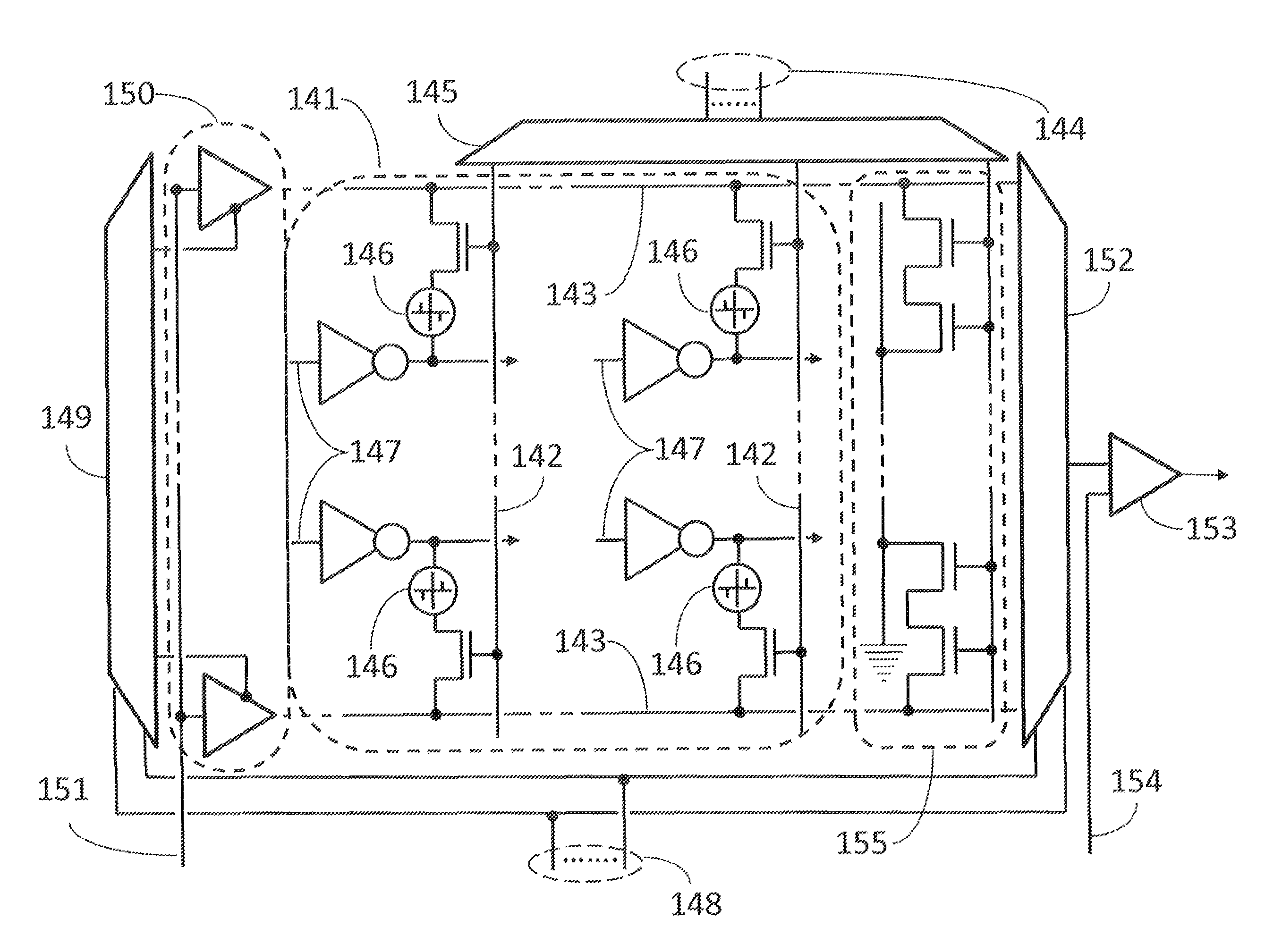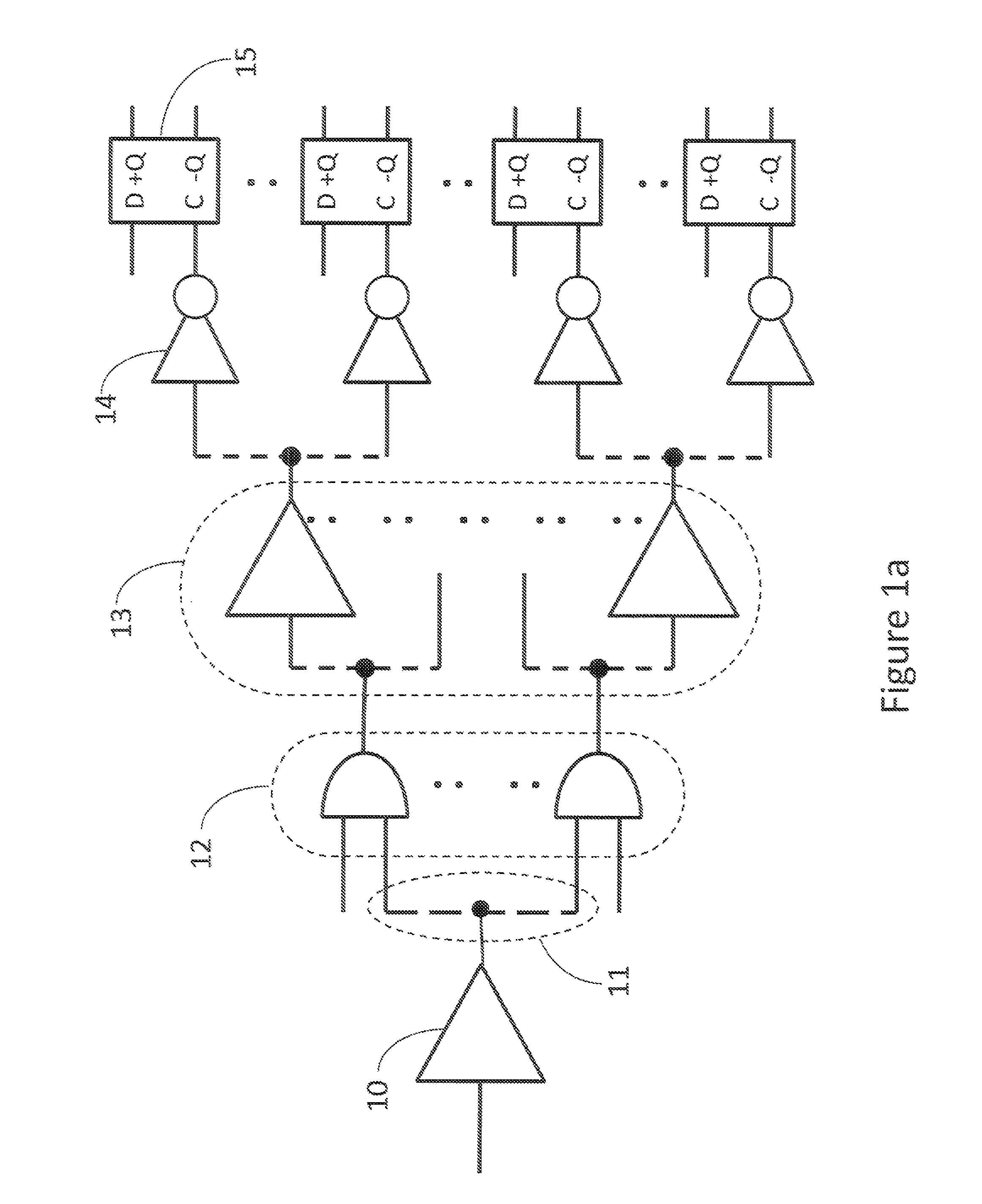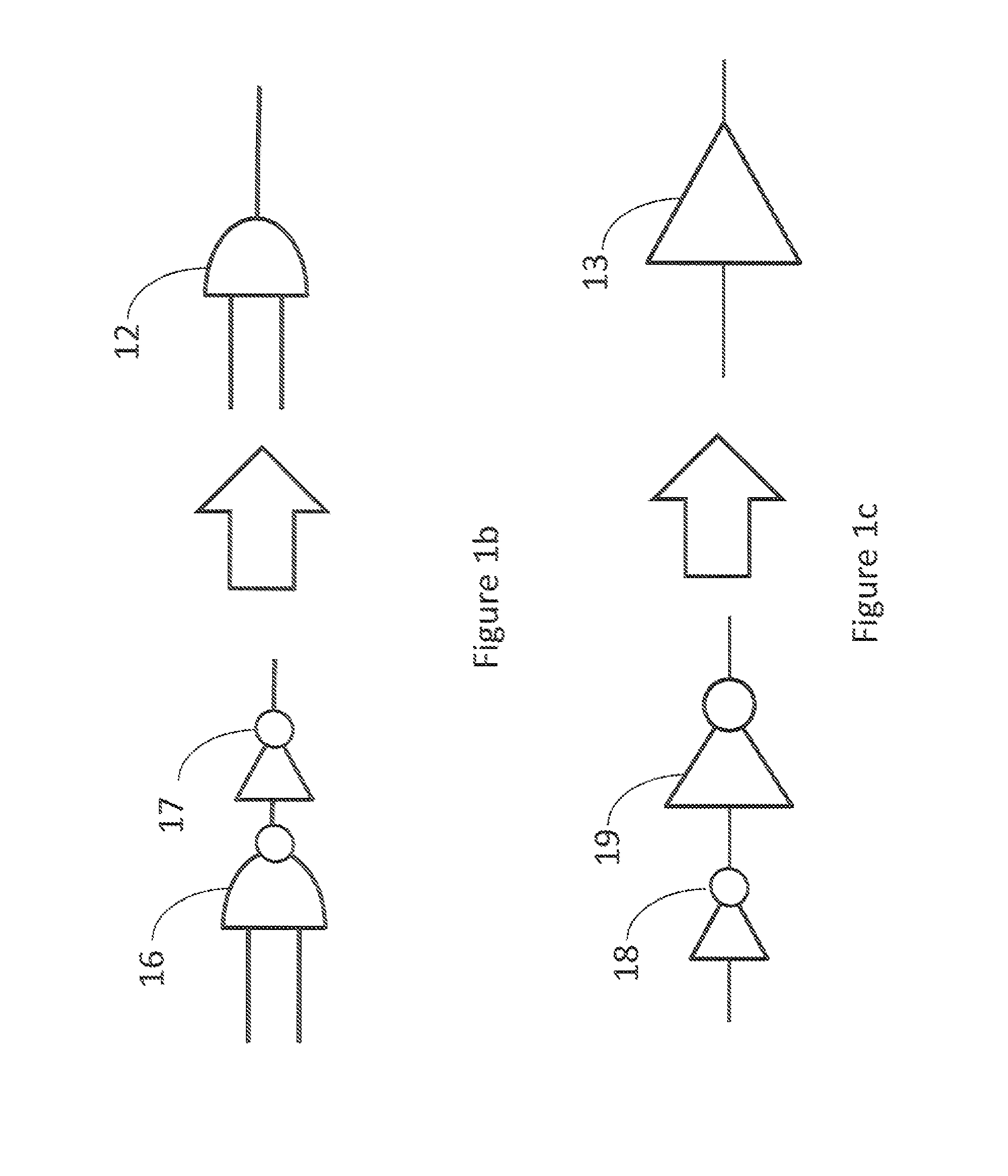Tunable clock distribution system
a clock distribution and clock technology, applied in the direction of generating/distributing signals, pulse techniques, instruments, etc., can solve the problem of large variability, and achieve the effect of improving the test process, minimizing clock skew, and increasing the potential skew
- Summary
- Abstract
- Description
- Claims
- Application Information
AI Technical Summary
Benefits of technology
Problems solved by technology
Method used
Image
Examples
Embodiment Construction
[0004]Various embodiments of the invention may relate to clock distribution structures using antifuse or phase change memory elements and methods for tuning the clock distribution structures.
[0005]In one embodiment each flip-flop may be clocked by a clock distribution structure, where each branch of the clock distribution structure may contain tunable inverters, which may be tuned by varying either the capacitance or the resistance on the output of the inverter.
[0006]In another embodiment the variable capacitances and resistances may form a programmable memory where variable resistors may be programmed to vary the delay of the clock signals to each flip-flop. Furthermore, the memory may include structures for measuring the variable resistors and calibrating the memory programming structure.
[0007]In one embodiment, if the contents of the flip-flops may be observed and set in a manner similar to what was presented in U.S. Pat. No. 4,495,629 granted Jan. 22, 1985, to Zasio et al., diag...
PUM
 Login to View More
Login to View More Abstract
Description
Claims
Application Information
 Login to View More
Login to View More - R&D
- Intellectual Property
- Life Sciences
- Materials
- Tech Scout
- Unparalleled Data Quality
- Higher Quality Content
- 60% Fewer Hallucinations
Browse by: Latest US Patents, China's latest patents, Technical Efficacy Thesaurus, Application Domain, Technology Topic, Popular Technical Reports.
© 2025 PatSnap. All rights reserved.Legal|Privacy policy|Modern Slavery Act Transparency Statement|Sitemap|About US| Contact US: help@patsnap.com



